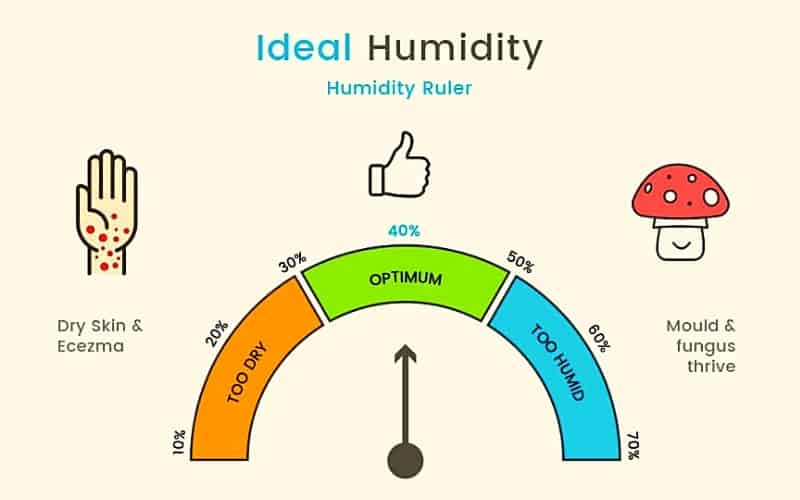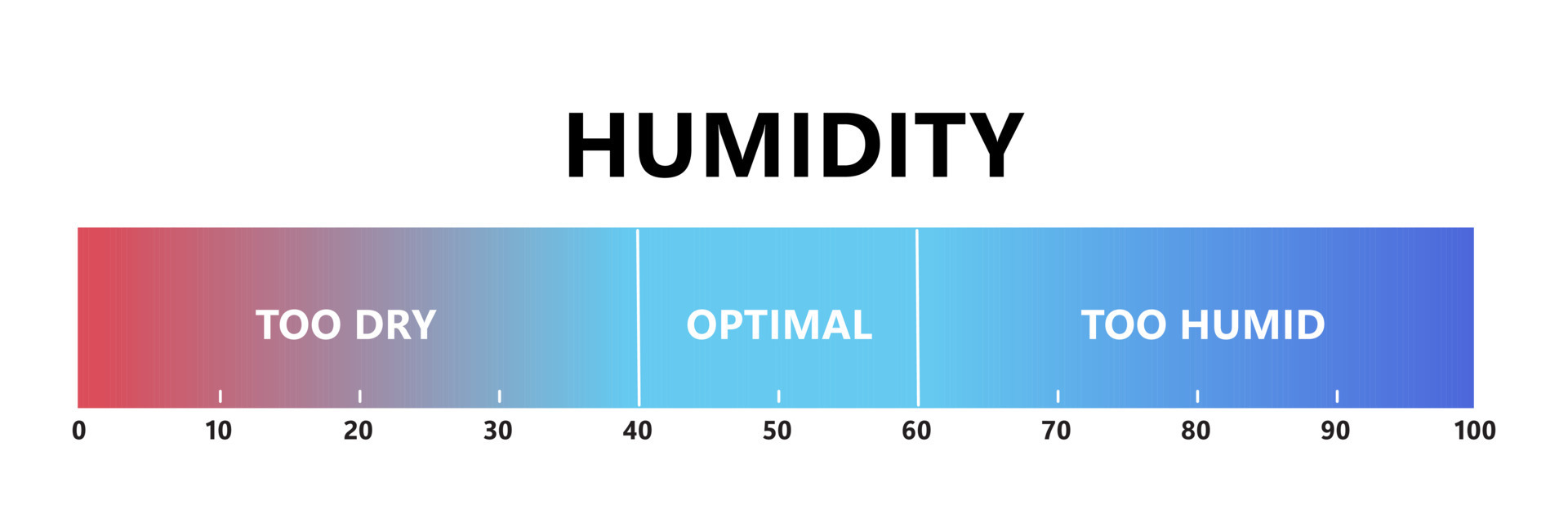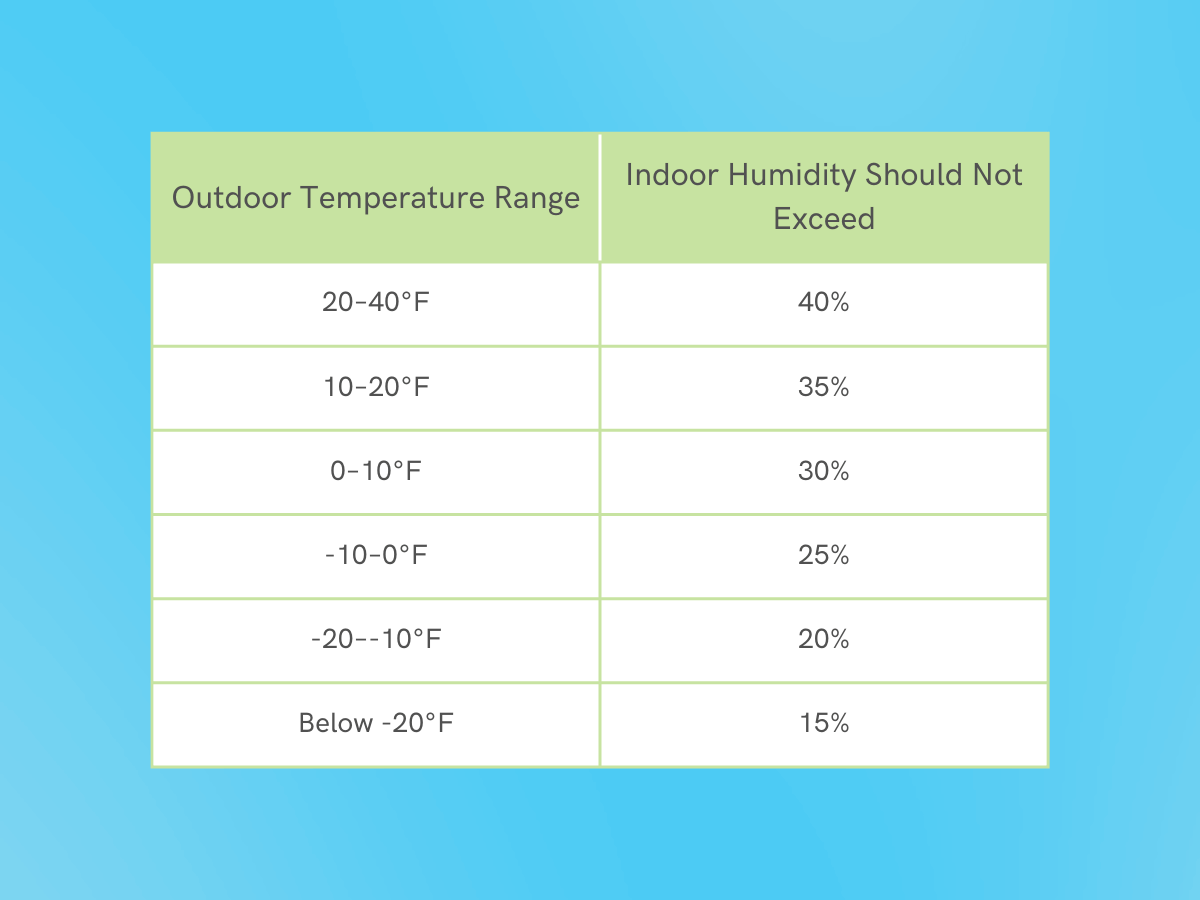What Should Be The Indoor Humidity Level

Maintaining optimal indoor humidity is crucial for comfort, health, and the longevity of building materials. As an HVAC professional, understanding the intricacies of humidity control is fundamental, impacting everything from energy efficiency to indoor air quality (IAQ). This article delves into the ideal indoor humidity levels, factors influencing them, and how HVAC professionals can ensure optimal conditions.
The Sweet Spot: Recommended Indoor Humidity Levels
The generally recommended indoor humidity level falls between 30% and 50% relative humidity (RH). During the winter months, especially in colder climates, maintaining this range can be challenging, and a slightly lower range of 30-40% might be more realistic to prevent condensation on windows and walls. In the summer, controlling humidity is equally important to prevent mold growth and that uncomfortable, sticky feeling. The key is to find a balance that minimizes health risks and maximizes comfort.
Exceeding 60% RH creates a breeding ground for mold, mildew, and dust mites, all of which can trigger allergic reactions and respiratory problems. Conversely, humidity levels below 30% can lead to dry skin, irritated sinuses, and increased susceptibility to respiratory infections. Therefore, monitoring and adjusting humidity levels are essential components of a healthy indoor environment.
Factors Influencing Indoor Humidity
Several factors contribute to indoor humidity levels, including:
- Outdoor Climate: Humid climates naturally lead to higher indoor humidity, while dry climates result in lower levels.
- Building Envelope: Poor insulation, leaky windows, and inadequate vapor barriers allow moisture to enter the building, increasing humidity.
- Occupancy: Human activities like showering, cooking, and even breathing contribute to indoor humidity.
- HVAC System Performance: An improperly sized or maintained HVAC system can struggle to effectively dehumidify or humidify the air.
- Ventilation: Lack of proper ventilation traps moisture indoors, exacerbating humidity problems.
- Appliances: Humidifiers, vaporizers, and even clothes dryers can significantly impact indoor humidity levels.
Understanding these factors is crucial for HVAC technicians when diagnosing and addressing humidity issues. A comprehensive assessment of the building, its occupants, and the existing HVAC system is essential for developing effective solutions.
HVAC Solutions for Humidity Control
HVAC professionals have a variety of tools and techniques at their disposal to manage indoor humidity effectively:
- Dehumidifiers: These appliances remove moisture from the air and are particularly useful in basements and other damp areas.
- Humidifiers: Central humidifiers integrated with the HVAC system or portable units add moisture to the air, combating dryness during winter.
- Air Conditioners: Modern air conditioners are designed to dehumidify as they cool, helping to maintain comfortable humidity levels.
- Ventilation Systems: Heat Recovery Ventilators (HRVs) and Energy Recovery Ventilators (ERVs) exchange stale indoor air with fresh outdoor air while minimizing energy loss, helping to control humidity and improve IAQ.
- Ductwork Sealing and Insulation: Preventing air leaks in ductwork is essential for maintaining consistent temperature and humidity levels throughout the building.
- Proper HVAC System Sizing: An oversized AC unit will cycle on and off too frequently, reducing its ability to dehumidify effectively. A properly sized system is crucial for optimal performance.
Skilled technicians can assess the specific needs of a building and recommend the most appropriate solutions for achieving optimal humidity levels. This requires a thorough understanding of HVAC principles, building science, and IAQ best practices.
The Role of HVAC Certifications
Earning relevant certifications demonstrates expertise and enhances career prospects in the HVAC industry. Some key certifications related to humidity control include:
- NATE (North American Technician Excellence): NATE certification validates a technician's knowledge and skills in various HVAC specialties, including installation, service, and efficiency.
- EPA Section 608 Certification: Required for technicians who handle refrigerants, this certification ensures responsible handling and disposal of ozone-depleting substances.
- Indoor Air Quality (IAQ) Certifications: Organizations like the American Indoor Air Quality Council (AmIAQ) offer certifications focused on IAQ assessment and remediation, including humidity control.
- Building Performance Institute (BPI) Certifications: BPI certifications focus on building science principles and energy efficiency, providing technicians with the knowledge to improve building performance and IAQ.
These certifications not only enhance your credibility but also provide you with the latest knowledge and skills to excel in the field. Employers often prioritize hiring certified technicians, recognizing their commitment to quality and professionalism.
Career Paths in HVAC with a Focus on Humidity Control
A strong understanding of humidity control opens up various career opportunities within the HVAC industry:
- HVAC Technician: Install, maintain, and repair HVAC systems, including components related to humidity control. The median annual salary for HVAC technicians in the United States is around $50,590 (Bureau of Labor Statistics, May 2021), with potential for higher earnings based on experience and specialization.
- HVAC Installer: Specialize in the installation of new HVAC systems, ensuring proper sizing and configuration for optimal humidity control.
- HVAC Service Technician: Focus on diagnosing and repairing problems with existing HVAC systems, including humidity issues.
- Energy Auditor: Assess building energy performance and identify opportunities for improvement, including optimizing humidity control.
- Indoor Air Quality Specialist: Specialize in assessing and improving IAQ, including addressing humidity-related issues.
- HVAC Sales Engineer: Design and sell HVAC systems, including solutions for humidity control, to commercial and industrial clients.
Real-World Example: Consider Sarah, a recent HVAC graduate who focused on IAQ during her training. She obtained her NATE certification and landed a job as an IAQ specialist with a large HVAC company. She now conducts IAQ assessments, recommends solutions for humidity control, and helps clients create healthier indoor environments.
The Job Outlook for HVAC Professionals
The job outlook for HVAC technicians is projected to grow 5 percent from 2021 to 2031, about average for all occupations (Bureau of Labor Statistics). This growth is driven by the increasing demand for energy-efficient HVAC systems and the growing awareness of the importance of IAQ. As building codes become more stringent and consumers become more concerned about their health and comfort, the demand for skilled HVAC professionals with expertise in humidity control will continue to rise.
Furthermore, as existing HVAC systems age, there will be a need for skilled technicians to perform maintenance, repairs, and upgrades. The increasing complexity of modern HVAC systems also requires technicians with advanced training and certifications.
Tools and Technologies for Humidity Monitoring and Control
Advancements in technology are providing HVAC professionals with increasingly sophisticated tools for monitoring and controlling humidity:
- Digital Hygrometers: These devices accurately measure relative humidity levels, providing real-time data for analysis.
- Smart Thermostats: Many smart thermostats include humidity sensors and allow homeowners to remotely monitor and control humidity levels.
- Building Automation Systems (BAS): BAS systems integrate humidity sensors and control devices, allowing for automated humidity control in commercial buildings.
- Data Loggers: These devices record humidity levels over time, providing valuable data for identifying trends and troubleshooting problems.
- Infrared Cameras: Infrared cameras can detect moisture intrusion and hidden mold growth, helping technicians identify sources of humidity problems.
Staying up-to-date with these technologies is essential for HVAC professionals who want to provide the best possible service to their clients.
Best Practices for Maintaining Optimal Indoor Humidity
Here are some best practices for HVAC professionals to share with their clients to help them maintain optimal indoor humidity:
- Regularly Monitor Humidity Levels: Use a digital hygrometer to monitor humidity levels and adjust HVAC settings as needed.
- Maintain HVAC Systems: Schedule regular maintenance to ensure that HVAC systems are operating efficiently and effectively.
- Control Moisture Sources: Repair leaks promptly, vent appliances properly, and take steps to reduce moisture in bathrooms and kitchens.
- Improve Ventilation: Ensure adequate ventilation to remove excess moisture and improve IAQ.
- Use Dehumidifiers and Humidifiers as Needed: Use these appliances to supplement the HVAC system and maintain optimal humidity levels.
By following these best practices, homeowners and building managers can create healthier, more comfortable, and more energy-efficient indoor environments.
Conclusion
Understanding and controlling indoor humidity is a critical aspect of HVAC professionalism. By staying informed about the latest technologies, best practices, and certification requirements, HVAC professionals can provide valuable services to their clients and build successful careers. The demand for skilled technicians with expertise in humidity control is growing, making this a rewarding and promising field for those who are passionate about improving indoor environmental quality. Embracing continuous learning and professional development is key to thriving in this dynamic industry.










